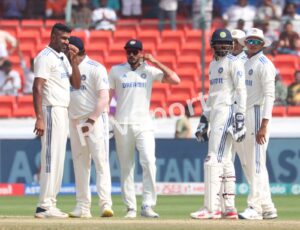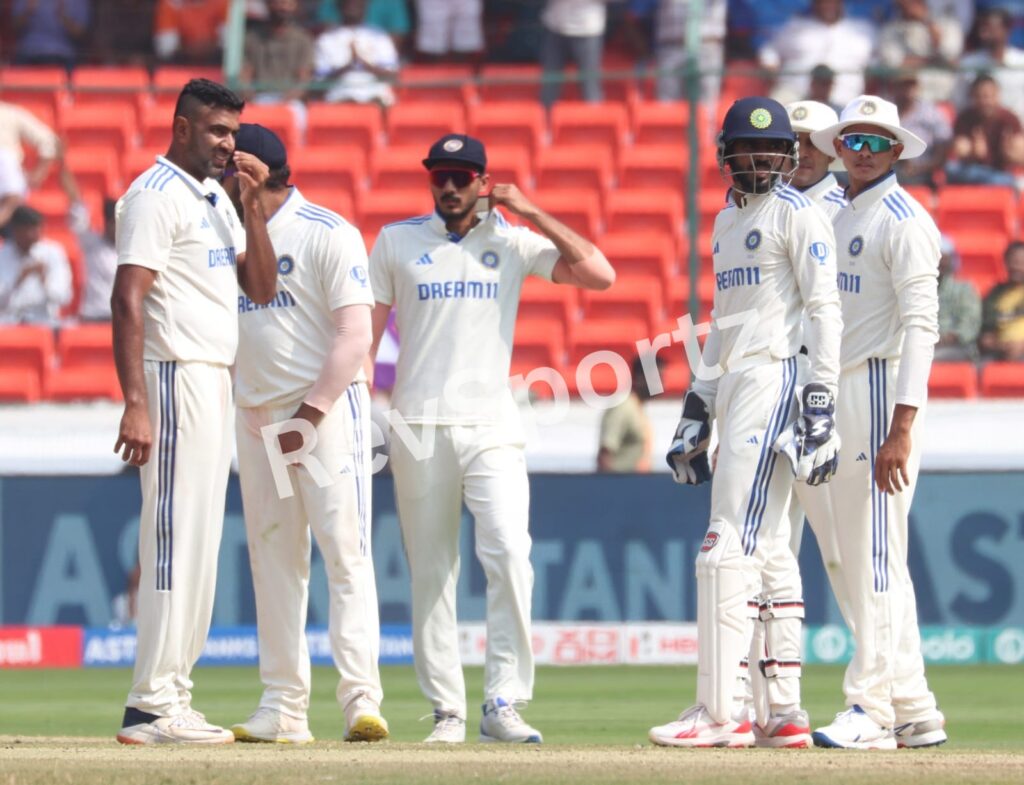
India lost a Test on the fourth evening after looking like winning for two-and-a half days. In a dramatic turn of events seldom seen on home soil in a long time, they firstallowed England to come out of a hole and then dug one for themselves which proved too deep.
With due credit to England and Oliver Pope, there were problems aplenty in the home team. From application errors in batting in both innings, loose bowling at crucial times, passive captaincy and a sudden dip in overall intensity, there were several factors. RevSportz lists what went wrong in Hyderabad and what ought to be right.
Dip in intensity:After India took a lead of 190 and England slipped to 163-5 in the second innings, the Test seemed over. That’s when a change in the body language of the Indian players started becoming visible. Like the fans, they too seemed to assume that the match had been won. The will to persevere disappeared. Everything appeared to have switched to auto-pilot mode.The outcome was a match-turning and rapid century stand between Oliver Pope and Ben Foakes.
Throwing wickets away:One can’t forget the batting lapses in the first innings, leave alone the second. They came in, got settled and then threw it away. At least five in the top eight fell playing forcing shots. England’s bowlers didn’t earn those wickets. Even though the eventual total of 436 was formidable, it was 70-80 short of what they should have got. This difference proved decisive. There are harsh lessons to be learnt from such false shows of bravado.
Inability to stem run flow:It was shocking to see India fail to control the flow of runs when Pope shared the partnerships with Foakes, Rehan Ahmed and Tom Hartley. These were for the sixth, seventh and eighth wickets. The average run rate was around 4.5. One can understand wickets not falling. But the runrate can be checked in Test cricket. There are no fielding restrictions, no problem with bowling wide of the stumps as compared to the white-ball formats. To see an experienced team merely watch this without doing anything was befuddling. This was the decisive factor.
India vs England, Day 4: Post-day discussion https://t.co/BXKgCLuETH
— Boria Majumdar (@BoriaMajumdar) January 28, 2024
Passive captaincy:At times, Rohit appeared too cool. It’s a good trait for a captain to stay calm under pressure. But there come occasions when the leader has to show some fire. Seen from a distance, Rohit didn’t appear proactive enough when Pope and the tail kept galloping away. The captain didn’t change things around or make things different. Surprisingly, that is exactly what he had done in the first innings to haul England back after a quick start. What happened in the second?
Shocking surrender by spinners:The biggest letdown was the spin attack. Ravichandran Ashwin and Ravindra Jadeja are the best in business in these conditions. Axar Patel is a handy containing bowler. They looked clueless. How on earth was that possible? Spinners who know these pitches inside out got swept — rather reverse-swept — away by Pope. India have lost Tests on home with them in the ranks, but never before had they been so completely dominated.
No Plan B:Now, all these things can happen in a match played over five days. Everything will not go your way all the time. There will be times when a quality opposition will be on top. That’s when coaches, captains and teams come up with Plan B. It’s not something they devise on the spot. They are expected to be ready to use it when required. India looked one-dimensional. When scratching heads is the alternative, this is what you get.
Pope’s Laxman act in VVS city:Everything said and done, India lost to a superlative innings from Pope. Not just in India, such a monumental and counterattacking rearguard act in the second innings hasrarely been seen in world cricket in the last decade or so. Shades of VVS Laxman at Eden Gardens in 2001? Well, it happened in VVS country!




